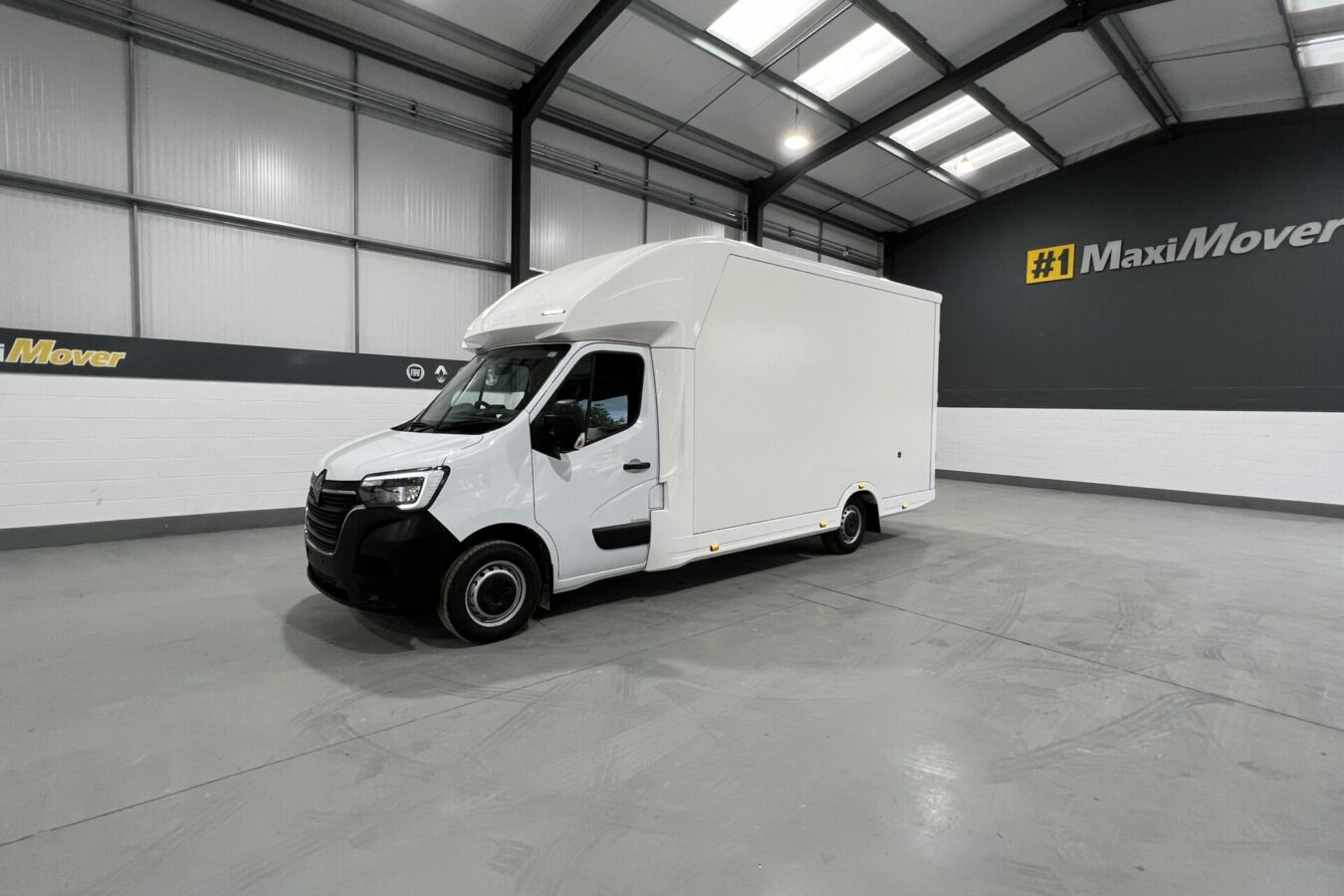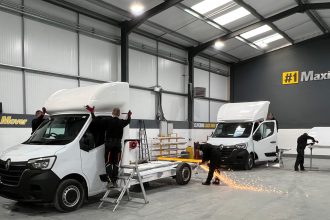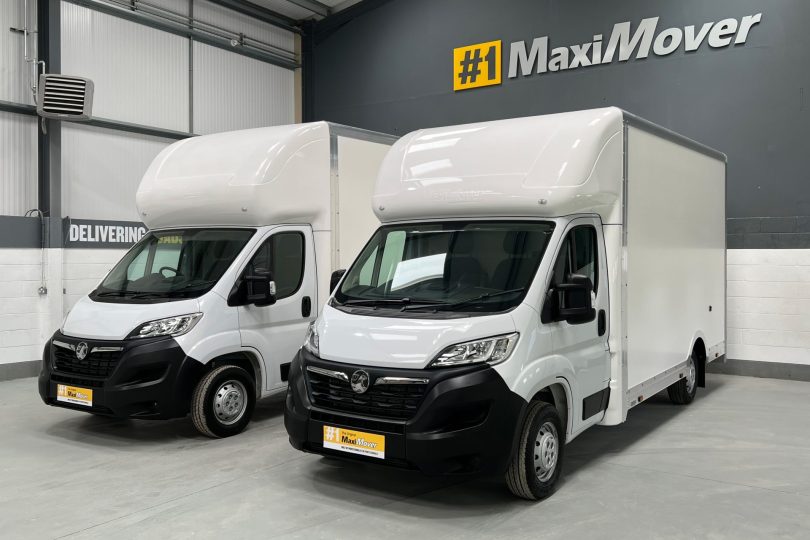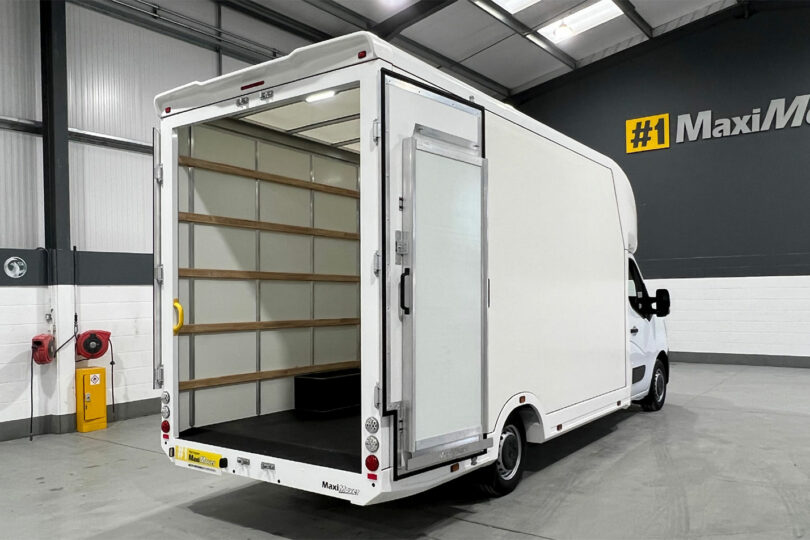Are your vans running legal today?
In 2017 the DVSA (Driver & Vehicle Standards Agency) implemented a 5 year strategy to protect British roads from unsafe drivers and vehicles. As a result more commercial 3.5 tonne vans are being stopped at the roadside than ever before.
Whether you’re an owner driver or a fleet operator, it pays to know the facts and restrictions surrounding load weights. It could save your business thousands of pounds in fines and reduce your risk of downtime.
What do they check?
As well as checking vehicles for roadworthiness and mechanical faults, the DVSA will check your gross vehicle weight (GVW) and the weight per axle. The ProMAX chassis helps alleviate the weight per axle problem, as illustrated in the diagram below.
Technical terms for vehicle weights:
Kerb weight: the weight of your van when it is unloaded but fuelled.
Gross Vehicle Weight – GVW: (found on your VIN plate) This is the maximum weight that a van is legally allowed to weigh when loaded.
To work out how much you can load onto your van and be within the legal GVW limit you need to subtract the van’s kerb weight from the van’s gross vehicle weight (GVW).
The figure you come to is the payload and is the total weight of what you can safely load into the van, but remember this includes driver, passengers and anything else that’s usually on board whilst the vehicle is travelling along the road – the DVSA will weigh it all.
For example, if your vehicle is carrying three passengers weighing in at 12 stone each (76kg) this will use up 228kg before you even start adding any cargo.
As well as knowing your vans GVW you also need to know your van’s axle weights. If your vehicle exceeds either the front or rear weights you can be fined up to £300 PER axle. This is only the initial fine.
The 3.5 tonne Luton van will be measured on each overloaded axle point and this can go up to a massive £5,000 per axle point.
Did you know that it is also possible for the van to be quite a way under the gross vehicle weight limit but still exceed the rear axle limit?
What are the costs?
The fixed penalty amount depends on how much the vehicle has gone over the legal limit.
| VOSA FINES | ||
|---|---|---|
| 5% – 10% over the limit | £100 fine | |
| 10% – 15% over the limit | £200 fine | |
| 15% – 30% over the limit | £300 fine | |
| 30% + | Summoned to court | |
Any van weighing over 30% of the limit could trigger a court summons.
At over 30% The DVSA would consider the van to be overloaded to the point that it is a clear hazard to other road users. In these cases the driver can be charged with dangerous driving – an offence that potentially carries a prison sentence.
According to the latest statistical report from the DVSA the average cost to a business for overloading an LCV vehicle is on the rise. In 2015/16 the average fine per offence was £788.94, but in 2016/17 getting found overweight at the roadside would have cost your business an average of £1034.01.
Plus, these additional roadside vehicle spot checks could impact more than just your pocket, your reputation is at stake too – late deliveries, returns and unhappy customers…
With roadside checks becoming more and more frequent, how can you reduce your risk?
The only surefire way to be certain that your vehicles aren’t overweight once loaded is at a weigh bridge, but these are a costly addition to your business. A public weigh bridge isn’t often a realistic option for most businesses either – It’ll reduce your operating time (and increase your daily costs) sending each and every load going out to weigh in first.
Prevention is always better than the cure.
At Maxi Mover, we focus on providing long term fleet solutions. Our R&D team are continually researching and developing the latest lightweight build technology to ensure our vans are the lightest, lowest, biggest and most efficient on the market. This means we can offer you unrivalled payloads and reduce your risk of overloading significantly.
How?
Our exclusive Advanced Lightweight ProMAX Chassis is much lighter than any other on the road today.
The ProMAX chassis also allows us to build the biggest & longest 3.5 tonne Luton van on the road (up to 5.6M in length) AND the widest (up to 2.3M) which creates the optimum loading environment to evenly distribute weights between your front and rear axles.
We only use advanced materials throughout to construct our heavy-duty yet ultra-lightweight bodies on the back of our vehicles.
Maxi Mover low floor Luton vans are truly designed and built for the only business that matters – yours.
With loading heights at just 550mm, it’s a small step for your driver, but a giant leap forward for your business.















